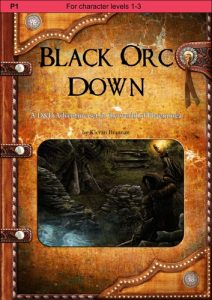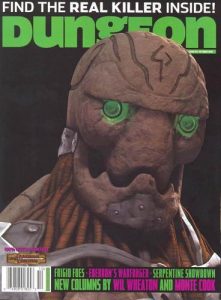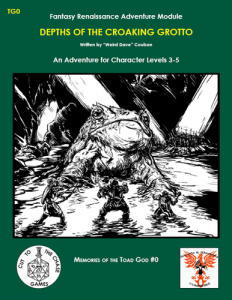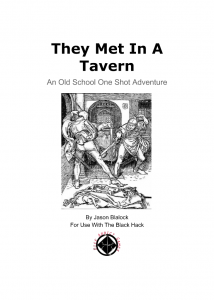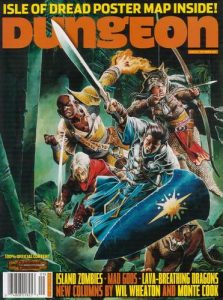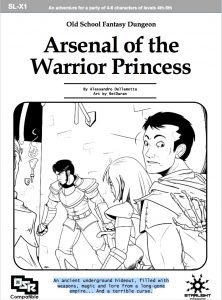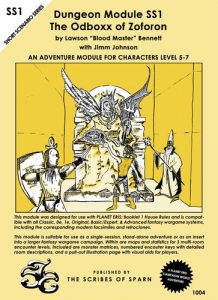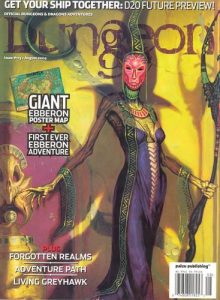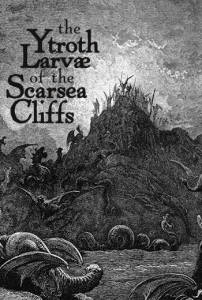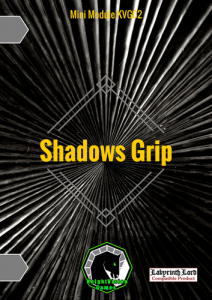
By Jim Baney
KnightVision Games
Labyrinth Lord
Levels 2-3
Kobolds and Goblins living together? What has the world come to?
This is a very simple ten page/sixteen room cave complex with kobolds and goblins. The actual rooms are split over three pages, with the rest being maps, filler, etc. It has a very simple design. It seems disconnected in places, almost as if it were procedurally generated.
The party comes upon a smouldering farmhouse. Walking out is an asshole paladin with a shish kabobed kobold on his sword. The farmer and wife are missing. The party “track” them back to a cave, enter it, and kill everything. I’m not opposed to the smouldering farmsteam hook. In fact I prefer it to the more overly complicated shit and do-goodery that frequently shows up. Yeah, it’s tonights adventure and it’s obvious. At least you don’t have to put up halflings making a direct appeal to your kindness. But … would it be that much harder to add an obvious large chest, dug up, with gold (or even platinum!) coins trailing, and the paladin the tax collector here to check up on the guy? Lookit ma! Another motivation! It also adds another dimension to the “Asshole paladin” trope. You know, the one who can’t be bothered to rescue the captured farmer & wife because he wants to make sure the other farms are not attacked? But the local lord, out collecting taxes? He’d probably be willing to cut the party in on the take, a finders fee for getting him what he’s owed AND getting in better with the tenant farmers everywhere by looking out for the suckers. It’s not that fucking hard and adds/modifies maybe two or three sentences. On the plus side the whole intro is less just a couple of paragraphs, so no long lead-is, thanks god.
The dungeon proper then starts, with no real description of the journey to it or the entrance. Just rooms. The keyed encounters are … unusual. It’s pretty minimally keyed, think of B2. But the design is weird as fuck. Basically, each room has a kobold or goblin encounter. Here’s the description for the last room, sixteen: “Room 16 – Loose gravel is piled up along the walls. Part of the ceiling has collapsed. Goblin (1)” Weird, right? The description has little to do with the room shown on the map as well. It has stairs and a secret door. What’s the goblin doing in there? Who knows! What’s the purpose of the gravel & ceiling? Nothing! Here’s another example, from room six: “Room 6 – A putrid smell of rotting meat and urine permeates this room. A strange mist conceals the ceiling. Kobold (2)” The smell and mist are never mentioned. There’s no reason for it. It just is. Not mentioned is the chasm/bridge thing shown on the map that appears to span a large body of water. Other rooms are similar.
It looks like someone rolled on the random dungeon dressing table and just copied it in to the room descriptions. At the risk of telling you how to play D&D, I believe those tables are meant for inspiration, to help you build upon something, and not to be taken too literally. Because taken literally they add NOTHING.
I’ve already botched a bit about the descriptions not matching the map, but the lack of the pit trap is something I find interesting also. Room one has a pit trap. It goes on and on about the mechanics of it and how to run it. (Have I mentioned yet, ad nauseum, how I hate overly detailed mechanics? I hate overly detailed mechanics/rules in my adventures.) But … it’s not shown on the fucking map. The map shows bodies of water, and streams underground. It shows stairs. It shows secret doors (which never are mentioned in the text), it shows rubble piles. It has symbols for sinkholes. But it never puts a little “X” symbol on the map. Every fucking adventure from the beginning of time has marked pits on the map, but not this one. WTF? And the water/bridges, features are seldom mentioned in text. It’s like the map is divorced from the text.
The magic items present are decent. A pendant of invisibility you have to touch to activate. A hammer that teleports back to your hand after a hit. Those are ok. Not magnificent and weird but decent enough to show an effort was made. There’s also a nice tin can from ceiling sound trap. I love the classics. But then, there’s also this blue light bulb stuff on the ceilings in some places that is hardly mentioned. There’s no way in fucking hell the party ignores that. I don’t need an explanation spoon fed but “… comes from large bulb or sack-like structures hanging from the ceiling” is hardly supporting the DM. Just add “hacked insect abdomen” and I can go from there.
I don’t know why this exists. Was someone really “proud” to present it, as the publishers blurb states? No one is getting rich off of it, so presumably there was no time pressure to release it. Why was it published in its present form? Does it actually represent the vision the designer had in mind?
Now I want to start a freelance editing service. Not only do consumers deserve better, but so do designers. I suspect there is some attempt at copyediting and maybe even line editing from the big kids. But a real editor? I see a substantial gap there.
This is available at DriveThru.
https://www.drivethrurpg.com/product/189380/KVG002-Shadows-Grip?1892600

